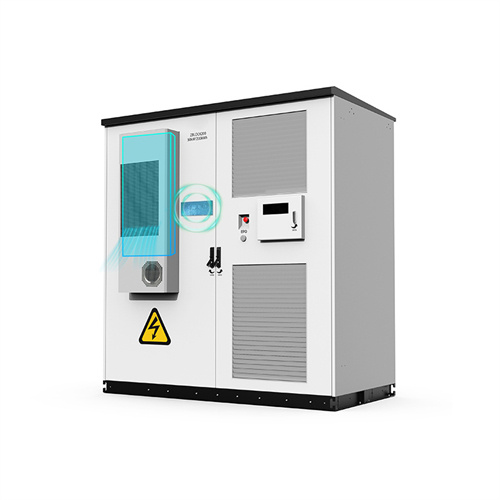Faroe Islands spower solar energy

Case Study: Energy storage enables SEV to optimize
SEV has a green vision for 100 percent renewable electricity production by 2030 by making full use of the Faroe Islands'' abundant wind and hydro energy resources, together with emerging technologies like photovoltaics and tidal

Hitachi Energy helps the Faroe Islands aim for 100% renewable energy
Hitachi Energy today announced that SEV 1, the power company serving the Faroe Islands, has selected an e-meshTM PowerStoreTM Battery Energy Storage (BESS) 2 solution as part of its

100% Sustainable Electricity in the Faroe Islands
In ratios of average consumption in 2030, installed power will be 224% wind, 105% solar with 8–9 days of pumped hydro storage according to the proposed RoadMap. The plan is economically

100% Sustainable Electricity in the Faroe Islands: Expansion
This work was supported in part by the Research Council Faroe Islands, in part by SEV, and in part by the University of the Faroe Islands. ABSTRACT SEV, the Faroese Power Company,

Frequency and Voltage Stability Towards 100
The energy production in Suðuroy in 2020 was 35 GWh in total, which was 9% of the total generation in the Faroe Islands and consisted of diesel and heavy fuel oil (85%), hydro (11.5%), wind (3%) and solar power generation (0.5%).

Minesto Underwater "Kite" Begins Delivering Electricity To Faroe Islands
On February 9, 2024, the company announced its utility-scale tidal power plant called Dragon 12 — which has an output of 1.2 MW — has been successfully commissioned and is delivering its

Energy in the Faroe Islands
SummaryElectricityOverviewOil consumptionGovernment energy policySee alsoExternal links
After taking a dip in the early 1990s the electricity production in the Faroe Islands has steadily been on the rise since then, going from 174 GWh in 1995 to 434 GWh in 2022, mostly from oil and hydropower. The energy sector employed 154 people or 0.6% of the islands'' total workforce as of November 2015. The islands have 4 diesel plants (around 100 MW and supplying district heating),

Towards 100% Renewables in the Faroe Islands: Wind and Energy Storage
Faroe Islands'' power system is discussed in section V and followed with the paper''s conclusions. II. B. Energy resources like wind, hydro and solar are available in the islands, and emerging

sPower acquires solar projects from National Grid
AES clean energy president Leo Moreno said: "Our merged renewables platform will bring together sPower and AES'' differentiated capabilities in solar, wind, and energy storage. Through this platform, we look

The Least-Cost Path to a 100% Renewable Electricity Sector in the Faroe
wind power plants (WPPs), and battery energy storage systems (BESSs) at The technologies considered in a 100% renewable electric-ity sector on the Faroe Islands are wind, solar, tidal,

Frequency and Voltage Stability Towards 100
This study focuses on the power system of Suðuroy, Faroe Islands, which is in the transition towards 100% renewables. The impact of three events on the frequency and voltage responses has been simulated based on 2020, 2023,

6 FAQs about [Faroe Islands spower solar energy]
How much electricity is renewable in the Faroe Islands?
In the Faroe Islands, more than 80% of the power for the main grid was renewable on 50 days in 2022. The municipality-owned company SEV is the main electricity supplier, providing approximately 90% of the total production, with private producers contributing the remaining percentage.
Does the Faroe Islands have a solar park?
The Faroe Islands have a solar park with a 250 kW capacity in Sumba. It is expected to produce 160 MWh/year (i.e. a capacity factor of 7.3% and equivalent to 35 tons of oil), mainly in the summer when rain and wind are low.
Who produces electricity in the Faroe Islands?
SEV, the municipality-owned company, produces approximately 90% of the electricity in the Faroe Islands. Wind power was introduced in 1993, initially producing as little as 423 MWh, but rising to 90 GWh by 2022.
How many wind farms are there in the Faroe Islands?
Furthermore, external suppliers operate one wind farm and one biomass plant. Total installed capacity in the Faroe Islands is 163 MW and total power generation in 2019 was 386 GWh. Max demand was 63.1 MW in November 2020. In 2018, 49% of power generation came from renewable sources, i.e. hydro and wind power, respectively.
Why is Sev the main power supplier in the Faroe Islands?
SEV is the main power supplier in the Faroe Islands. We operate on 17 of the 18 islands that constitute the Faroe Islands. Isolated in the North Atlantic Ocean, the Faroe Islands need to be self sufficient in terms of electricity generation as the Faroese electrical grid is not interconnected to neighbouring countries.
Should the Faroe Islands be self-sufficient?
Isolated in the North Atlantic Ocean, the Faroe Islands need to be self sufficient in terms of electricity generation as the Faroese electrical grid is not interconnected to neighbouring countries. SEV operates six hydro power plants, three thermal power plants, three wind farms and one solar power plant.
Related Contents
You may like
- The Revolutionary Flywheel Energy Storage System: Powering the Future with Spinning Innovation
- Enphase Energy Ensemble Lithium-ion Storage Revolutionizes Hospital Backup in Japan
- Global Energy Storage Standards and Their Impact on Sustainable Development
- Low Loss Flywheel Energy Storage: The Spinning Solution to Modern Energy Challenges
- Renewable Energy Storage: The Unsung Hero of Our Clean Energy Transition
- Energy Storage Innovation at Loughborough University: Where Engineering Meets Real-World Impact
- AC-Coupled Energy Storage Systems Revolutionize Agricultural Irrigation with Decade-Long Reliability